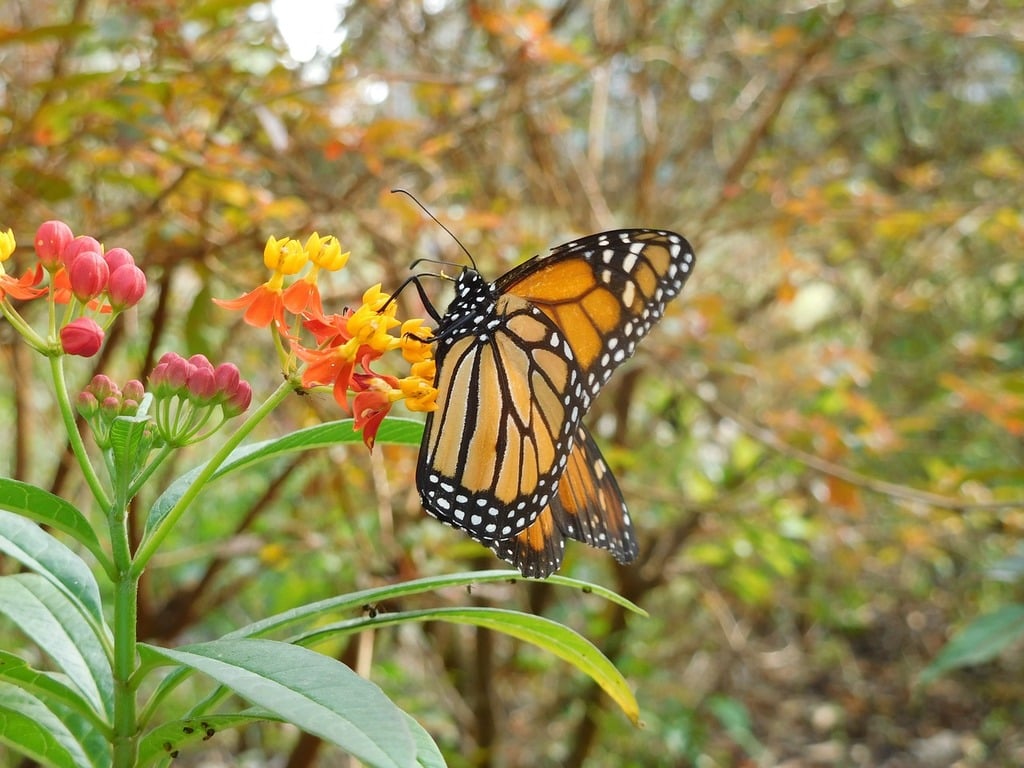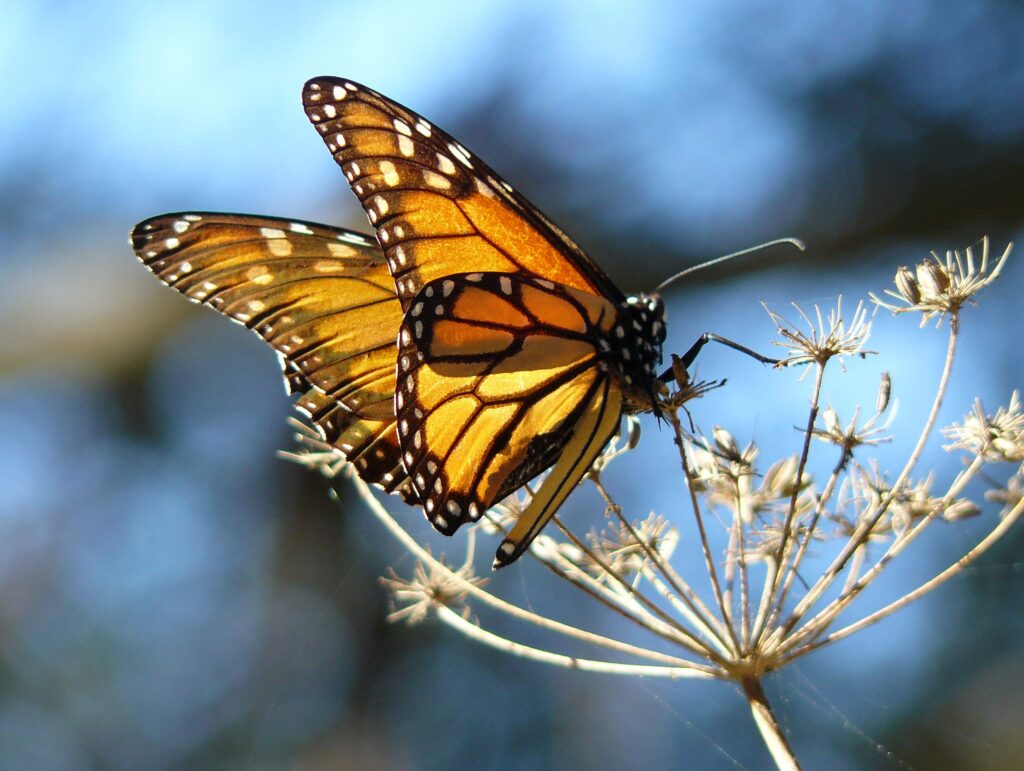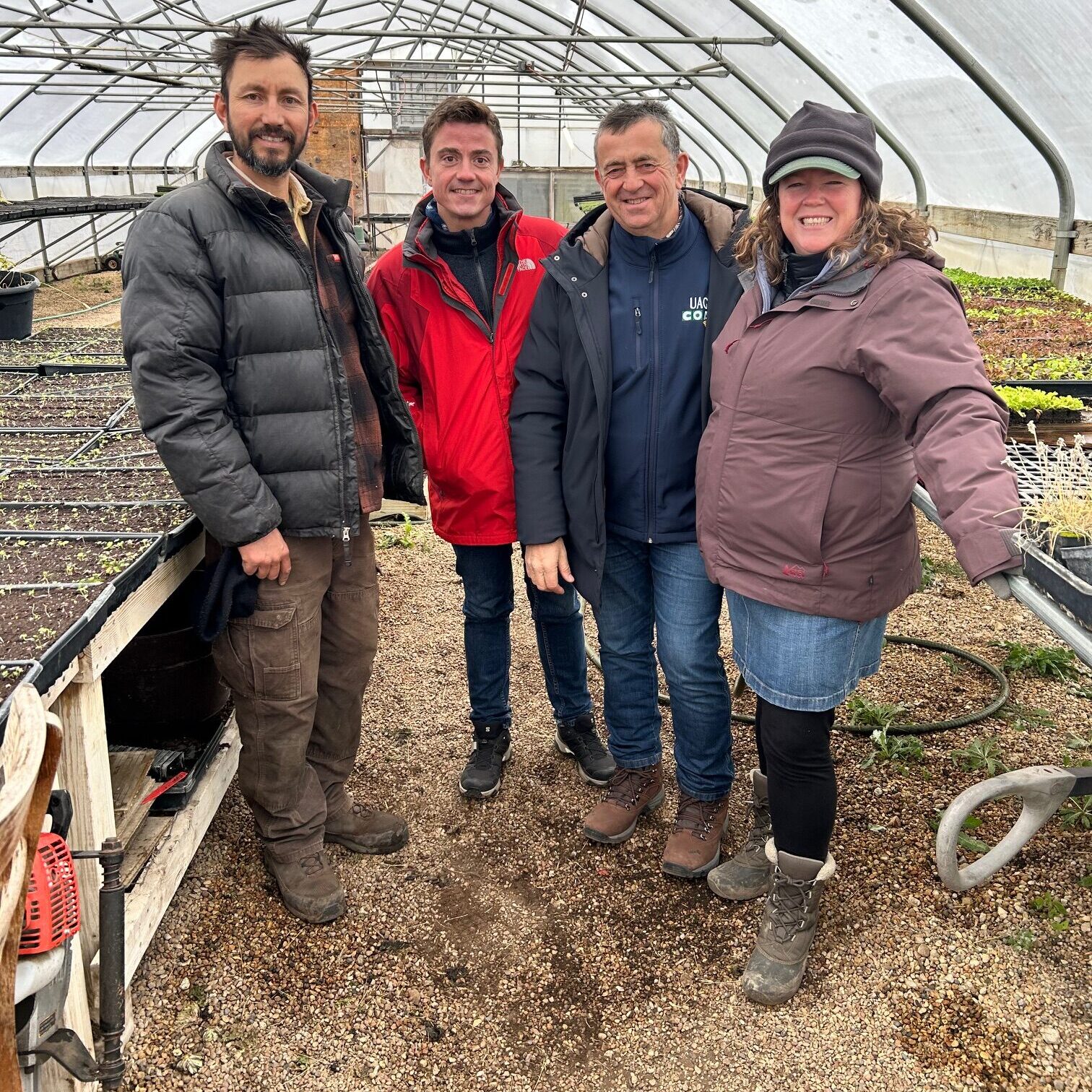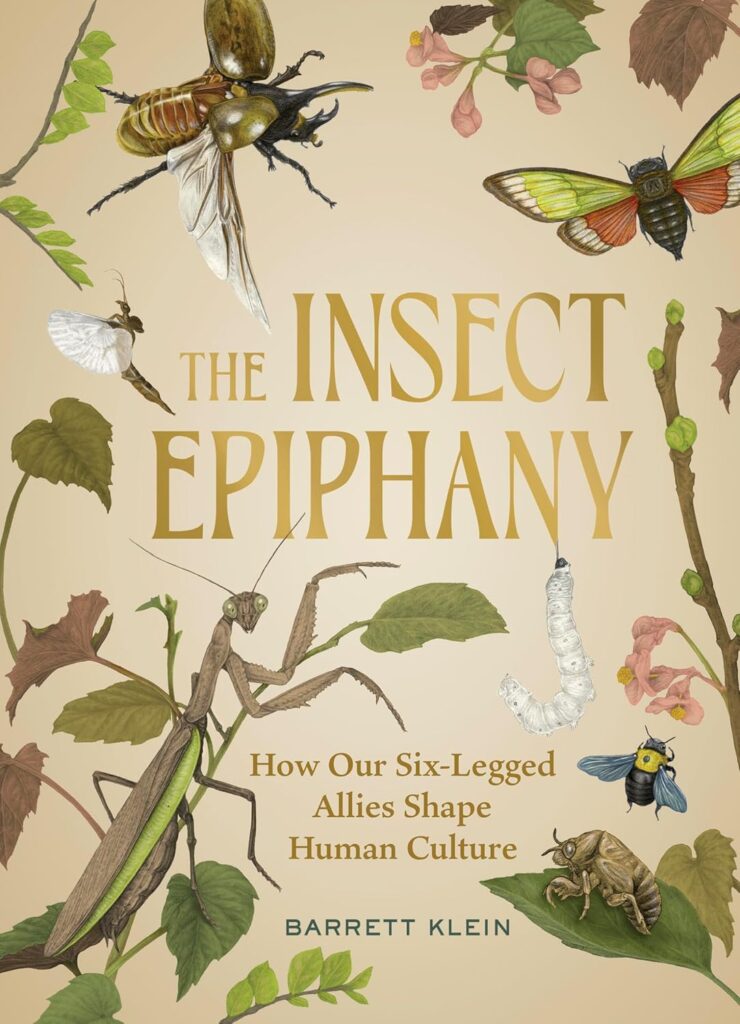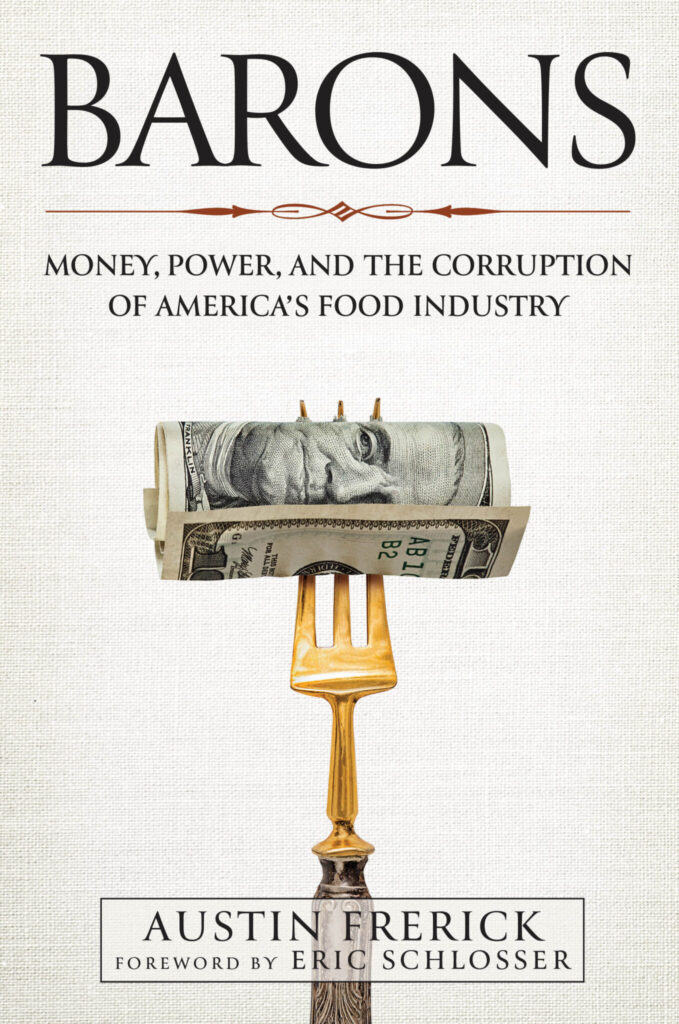Jump right to: Protect the Monarch Butterfly | COAG Farmer Trip Overview | Member Survey | Palestine Seed Fundraiser | What We’re Reading
To our supporters,
Welcome to the new year! Family Farm Defenders is starting 2025 determined to build a movement that establishes a fair, just and resilient agricultural system rooted in food sovereignty, agroecology, peace and international solidarity.
This will require systemic change – and all of us working together. We finished 2024 by hosting Javier and Luis, two farmers from Spain who are involved in the European farmer protests demanding fair prices and opposing free trade agreements. Scroll down to see more information about their tour.
For 2025, solidarity actions will be critical as we stand with farmworkers and food chain workers threatened by deportation raids as well as minority farmers facing diminished access to important USDA programs. Watch our website and Facebook page for updates.
A solidarity action you can support now is donating to receive a Palestine Solidarity Seed Pack, a fundraiser for the Stop Gaza Starvation Campaign. More information below.
Upcoming actions in the new year:
- February 21-22 – Join us at the Marbleseed Conference in La Crosse, WI, where we will host a booth with free zines & friendly chats, as well as a Food Sovereignty and Agroecology meetup on Sat. Feb. 22nd from 10:15 – 11:45 am in South Hall Rm. D.
- February 25-27 – National Family Farm Coalition’s Lobby Days will include two FFD members traveling to Washington, DC, to advance policies outlined in NFFC’s Farm Bill platform.
- March 2-7- Four FFD delegates will attend the in-person gathering of La Via Campesina to rebuild the North American region, strengthening the solidarity among our organizations and our international allies through political analysis and intentional actions.
Call to Action: Protect the monarch butterfly
| The issue: The U.S. Fish and Wildlife Service (USFWS) has announced a proposed rule to list the monarch butterfly as threatened under the Endangered Species Act (ESA). and is seeking public input. You will find helpful info at the FWS December 10, 2024 press release, and may add your comment at this link anytime before March 12, 2025. |
| To save the monarchs, other pollinators and even humanity, we need deep systemic change of our agriculture system. The Center for Biological Diversity and Center for Food Safety posted this on December 10, 2024: “‘Today’s monarch listing decision is a landmark victory 10 years in the making. It is also a damning precedent, revealing the driving role of pesticides and industrial agriculture in the ongoing extinction crisis,’ said George Kimbrell, legal director at the Center for Food Safety. ‘But the job isn’t done: Monarchs still face an onslaught of pesticides. The Service must do what science and the law require and promptly finalize protection for monarchs.’ Migratory monarchs face tremendous threats. Their initial decline was driven by widespread loss of milkweed, the caterpillar’s sole food source, due to increased herbicide use on genetically engineered corn and soybean crops — most notably, Monsanto’s Roundup. All stages of monarchs are harmed by neonicotinoid insecticides used in crop seed coatings and on ornamental plants. |
| George Naylor, organic farmer and board member of FFD and Center for Food Safety, has advocated policy change for decades. Read George’s article connecting Silent Spring, monarchs and the Farm Bill at The Natural Farmer and his blog expanding on the need to change agriculture away from GMOs and RoundUp Ready crops here. |
It’s time we move away from transgenic seeds and our reliance on agrotoxins, and place more value in cultivating a pollution-free environment for all creatures.
FFD board member Marlene Rojas shares with a personal reflection of her relationship with this pollinator: The monarch butterfly has been, for centuries, a symbol of migration. Every year, these tiny, winged creatures undertake a long, difficult journey from the vast grasslands of North America to the mountain forests of Mexico. In fact, these forests are in my home state of Michoacán. This journey is more than a physical journey, but one that requires resilience. This is no simple flight either; butterflies live off the land as they travel, getting help from all kinds of plants in different ecosystems that they path through for thousands of miles.
Every time I see a monarch butterfly, I feel closer to my story. The story of all those who, like me, have had to migrate, cross borders, face the uncertainty of a world full of dangers, but with the hope of reaching a destination with opportunities. The monarch, with its fragile but determined wings, travels thousands of kilometers, pushed by an instinct greater than itself, towards a destination that is not always clear. And I, like so many other immigrants, see myself reflected in its flight.
However, in recent years, that journey that the monarchs take has become more difficult. The effects of climate change, with its extreme temperatures and erratic weather patterns, have altered the monarchs’ migration routes. The flowers that feed them on their journey have become scarce, as chemical-intensive agriculture has killed many of the plants they need. Pesticides, which kill not only pests but also the plants and insects that form the base of the food chain, are reducing the areas that butterflies need to rest and feed during their migration.
Again, similar to the butterfly, the voyages of migrants have become more difficult over the years. Policies and governments do not help us in our journeys, but impede us. Especially for people without documents, the journey itself is hard for the potential violence one may experience, whether they are exploited for their labor, or gender. And once we arrive at our destinations, not only does exploitation continue, but we find ourselves torn from our families for years on end with our memories of them fading over time.
In rural Mexican communities, where the monarch finds its winter refuge, the connection with these butterflies is deep. In Chihuahua and Michoacán the monarch finds sanctuary and rest. Many caretakers of the monarch butterflies take their role as guardians very seriously, facing the danger of organized crime for taking over land to plant avocado or wood, most of which is exported to the USA. Many of us have learned to live in harmony with nature, but we also know that this harmony is in danger. Butterflies, like people who migrate, remind us that we are all interconnected in a delicate balance, and that our actions have repercussions that can extend beyond what we can see.
Now the sanctuaries for migrant communities are in our neighborhoods. Know Your Rights trainings give us community, and offer us protection from the uncertainty. Churches and schools, too, are coming to our assistance at times as the Trump government demonizes migrants, especially those without documents.
Monarchs return to Michoacán during the time of Día de los Muertos, when families celebrate their loved ones who are no longer with us, and monarch butterflies become a symbol of this ancestral connection. My grandmothers always told us that butterflies carry with them the souls of the deceased, returning to reunite with our families in a manifestation of love and memory. They also told us that they come to take a turn for us to take care of us. Monarchs are not only a part of the natural cycle, but also a reminder of those who have departed and the need to take care of what remains.
On the Day of the Dead, while butterflies fill the skies of Michoacán, I feel that not only the souls of our dead return, but also those of all of us who continue to search for justice, dignity, a place where we can live without fear. The memory of those who came before us, of those who fought for what we have, is reflected in that flight. And even though Trump’s policies and the violence of climate change continue to push us, our resistance is stronger than any barrier. Because, like butterflies, we too will return, again and again. And there is no wall that can stop us.
Add your comment at this link anytime before March 12, 2025.
Recap: COAG farmers Javi & Luis solidarity tour through the Midwest
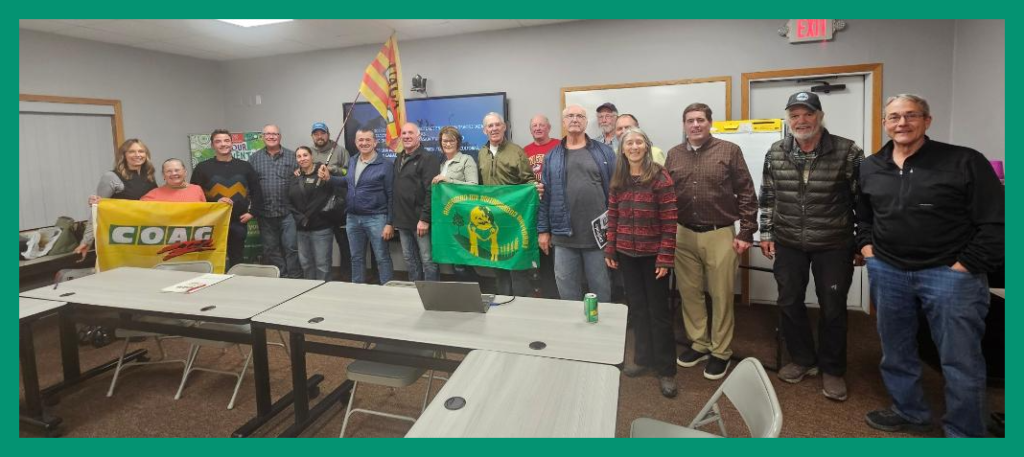
Over ten days, Javier and Luis from COAG – Coordinadora de Organizaciones de Agricultores y Ganaderos – visited eleven farms, gave three public presentations and offered their observations to various news outlets. The photo above comes from their presentation in Greene County, Iowa. Overall, the Spanish farmers were very well received and were also very curious to learn more about the current state of U.S. agriculture. At times they seemed surprised, almost overwhelmed, by the extent and power of corporate agribusiness. While they were eager to share their success in shifting EU farm policies, they were also keen to learn from U.S. farmers and find common ground in our struggles going forward. You can click through their journey below.
Map not loading above? View in browser
Highlighted media coverage of the tour:
Wisconsin State Farmer: Spanish farmers involved in European farm protests tour Wisconsin farm operations (12/11/2024)
Midwest Farm Report: Farmers Rally for Fairness: Spain’s Growing Agricultural Movement (12/18/2025)
Still in 2025 – Take our member survey!
| We want to learn more about who you are and what issues are most important so that we can involve our members more directly. We also want to learn about successful initiatives, organizing activities and movement-building efforts they are doing in their own communities that are making a difference. All questions are optional. Link here! |
Fundraiser for Gaza: Palestine Seed Solidarity Pack
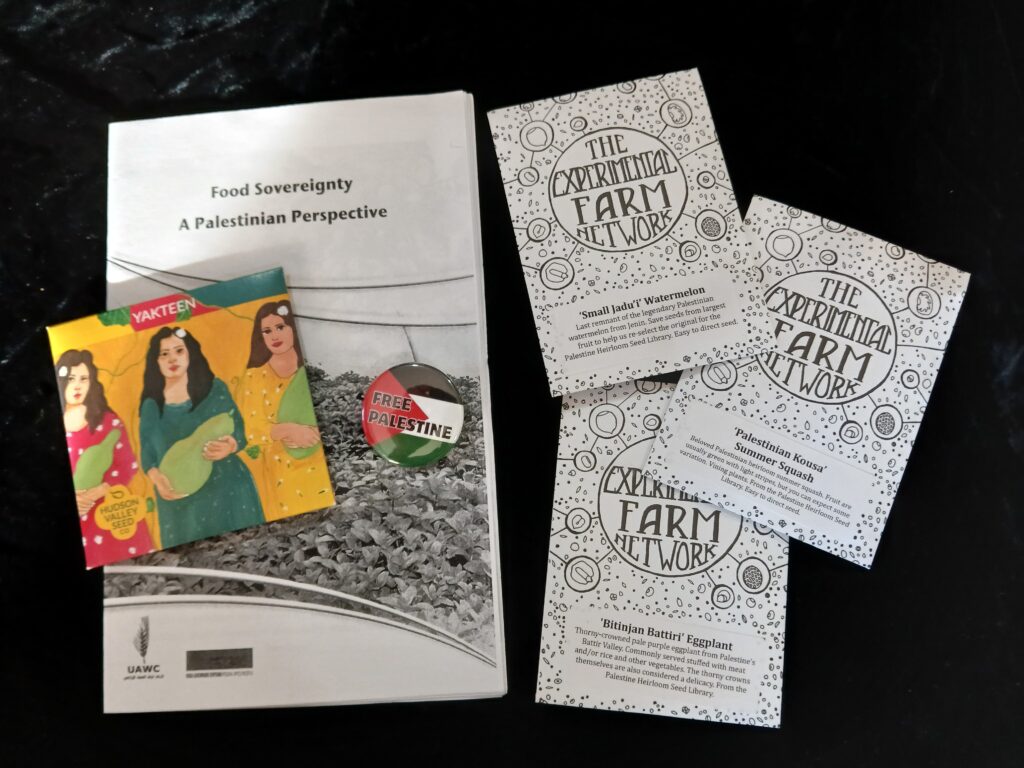
Information on ordering available here!
What we’re reading in the off season
Stuck inside during in these winter months? Curl up with a book recommended by an FFD board member.
For an intimate narrative on farm tradition and future:
Pastoral Song by James Rebanks (Read more here)
A firsthand account of change and compromise within a multigenerational farming family; waxing lyrical on the farm life while proposing the question: Can a commercial farm be a regenerative part of an ecosystem?
For a impassioned analysis on our interconnectedness:
Insect Epiphany: How Our Six Legged Allies Shape Human Culture by Barrett Klein (Read more here)
Our “frenemies” the insects! But they are so much more than just pests or pollinators. From silk to wax, bio-medicine to eco-architecture, humans and insects have been coevolving for centuries,.
For delving into history and context of the modern agricultural landscape: Barons: Money, Power and the Corruption of America’s Food Industry by Austin Frerick (Read more here)
Each chapter offers an in-depth profile and impact of the “barons” who rule different sectors of agriculture. Frerick combines his research and policy analysis with personal experience growing up and witnessing change in rural Iowa.

